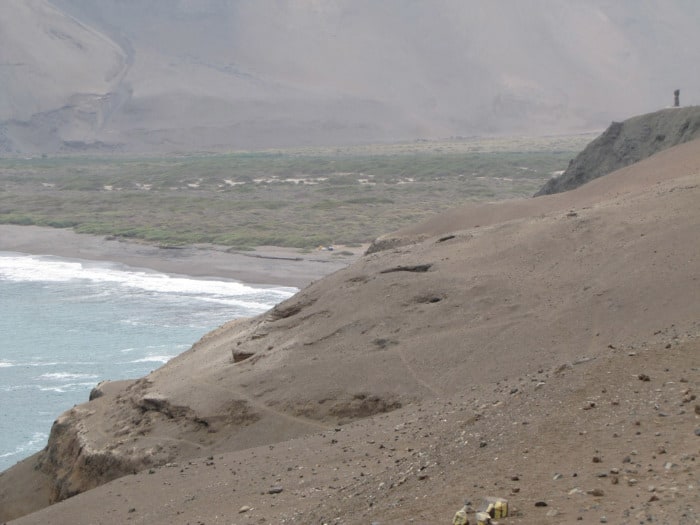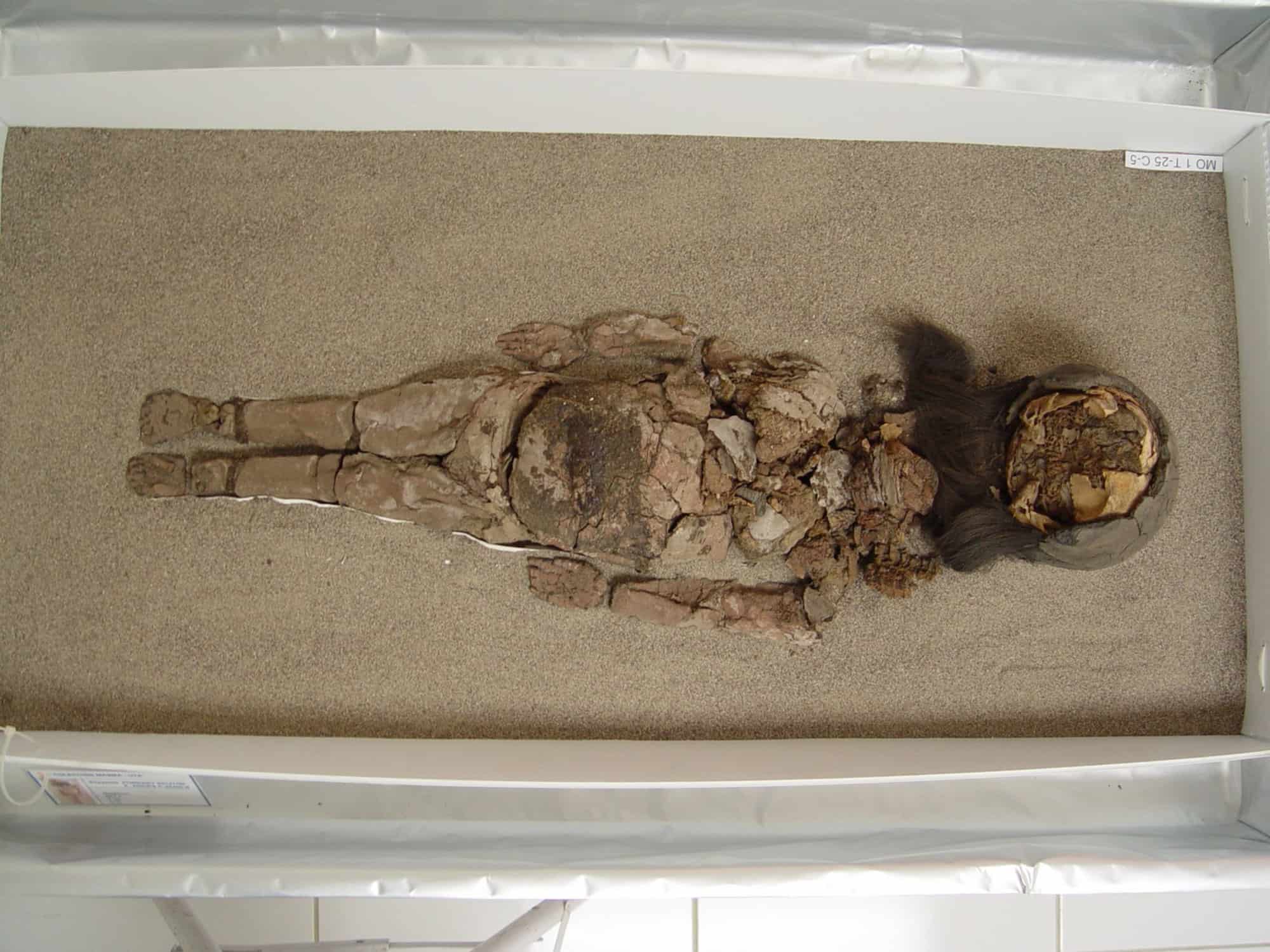Some seven millennia ago or more, a group of people called the Chinchorro lived along the coasts of northern Chile and southern Perú. Their lives revolved around fishing from the rich Pacific waters, even as a uniquely arid desert — the Atacama — lay inland behind them.
The Chinchorro were unique in many ways, but perhaps most of all in their burial practices. Several thousands of years before the Egyptians, they were mummifying their dead — creating the oldest known mummies on Earth — and doing so in a truly equal fashion.
“Whereas the Egyptians considered only kings and other exalted citizens worthy of mummification, the Chinchorro accorded everyone in the community, regardless of age or status, this sacred rite,” wrote Bernardo Arriaza, an expert on the mummies, which were first discovered in the Atacama desert in 1917.
Since then hundreds of mummies have been unearthed, with more still in the ground being uncovered regularly.
But lately, there’s been a problem. The specimens — more than 100 are held at a museum of the Universidad de Tarapacá in Arica, Chile — have started to degrade.
“The tissue change is reflected in the appearance of dark and bright spots,” explained Marcela Sepulveda, an archaeologist at the Universidad de Tarapacá, by e-mail.
Indoors, the change has been slow, but outdoors, mummies are being discovered already damaged, said Sepulveda. “When you excavate mummies you can see that degradation is already there,” she said. And the suspected reason? A changing climate.
Arica is often referred to as the driest place on Earth — but locals say that’s changing. According to Sepulveda, the city has seen increases in precipitation and humidity of late. “Everybody say[s] that here,” she averred. Indeed, weather historian Christopher Burt wrote about Arica in 2013, noting that despite its famous reputation for dryness, weather records from 1971 to 2000 suggest it has been somewhat wetter than usual of late.
Read all of The Tico Times climate change coverage

This may not be a change that can be definitively pinned on global climate change caused by humans, cautioned Ralph Mitchell, a Harvard microbiologist who teamed up with the Chilean researchers to figure out what was ailing the mummies. But it’s a change nonetheless.
“Our colleagues in northern Chile say it’s terribly obvious that the place is foggy a lot more than it ever was,” Mitchell said.
Mitchell noted that many of the mummies, found in the 1980s, had no problems until 10 years ago, “when they started to deteriorate.” The sequence itself suggests a climatic factor may be behind what’s happening.
So Mitchell and two Harvard colleagues collaborated with Sepulveda and one of her colleagues to try to figure out what was going on — whether indeed, climatic changes were the reason for mummy decay — and what that would mean for better preserving these unique, ancient objects. Their hypothesis was that, in effect, more airborne moisture had enabled bacteria to start to chow down on the ancient relics.
So they studied samples of mummy skin and dried pig skin, in various conditions, examining which microbes were living on and in the skin.
The result, said Mitchell, was the finding that what he calls bacterial “opportunists” were taking advantage of a more humid environment to “use the skin as a nutrient and start to break it down.” These were common skin bacteria, among others, which had been enabled by a particular set of environmental conditions.
The research has not been published yet, but the findings were publicized by Harvard on Monday. Mitchell, who is also a visiting professor in the environmental health department in the George Washington University School of Public Health, has worked on preserving many historical materials, ranging from ancient book manuscripts to the Apollo spacesuits.
The saga of the Chinchorro mummies illustrates just how vulnerable many irreplaceable cultural artifacts and world heritage sites may be to a changing climate (human caused or otherwise).
It’s something that the UNESCO World Heritage Centre has been attentive to for some time; a 2007 report from the U.N. agency noted that “the impacts of climate change are affecting many World Heritage properties and are likely to affect many more, both natural and cultural, in the years ahead.”
The U.S. Agency for International Development is also concerned about how climate change can affect world heritage sites — and it highlights an example that on a physical level sounds similar to what appears to be happening in Arica.
“Buildings in the rare medieval city of Leh in Ladakh, India, were constructed in a high altitude desert environment and are ill suited to current increases in precipitation,” it notes.
Several years back, Archaeology magazine listed yet another related example, noting that the frozen burial mounds of Scythian warlords (called “kurgans”), preserved in permafrost near Siberia, can be destabilized by Arctic thawing. In this case, it was ice, rather than desert, that had preserved remains intact for a magnificently long time — but a change in climate can once again mean an irreplaceable loss of artifacts and ruins.
Harvard’s Mitchell, meanwhile, said he suspects another possible climate heritage victim: outdoor marble statuary.
“Historic marbles in the outdoor environment are at risk from climate change,” he said.
So while we may not know exactly what’s happening in Arica, Chile — or whether it should be attributed to human-caused global warming — the fact is that damage to historical artifacts and world heritage sites is an expected consequence of climate change in general. And how could it be otherwise? Many of these sites have been remarkably preserved precisely because of the fact that they have been climatically unperturbed.
Alter that, and, along with many other consequences, the world could lose some of its history.
© 2015, The Washington Post






